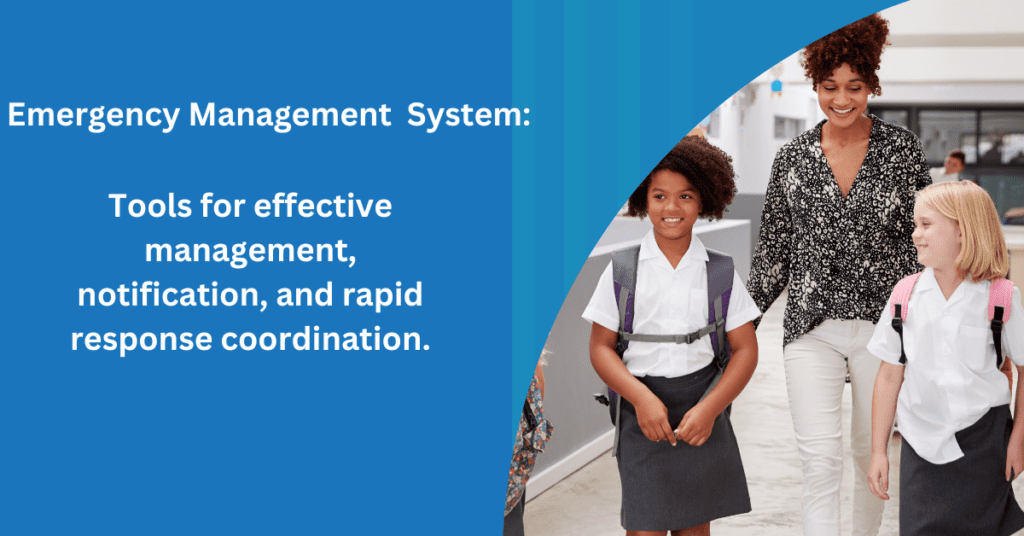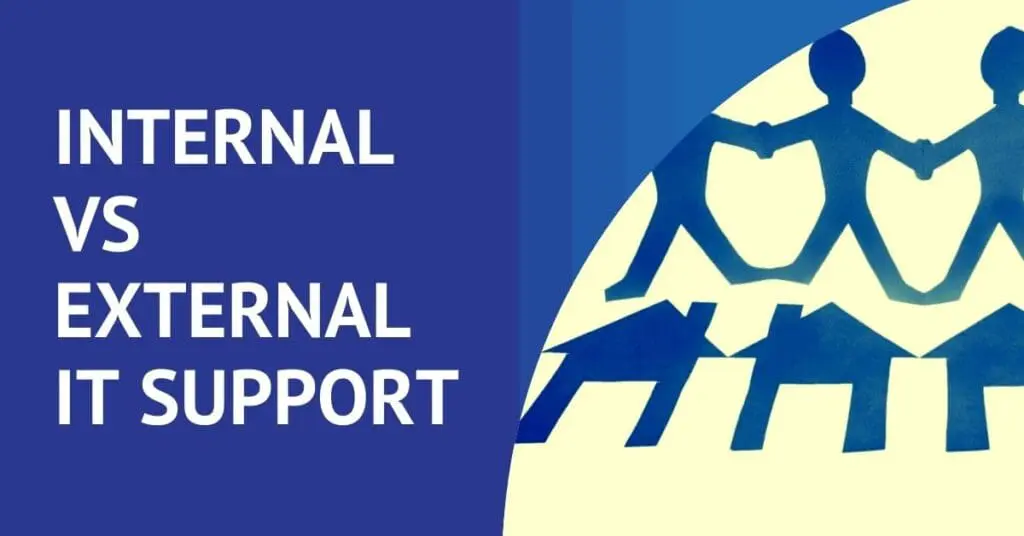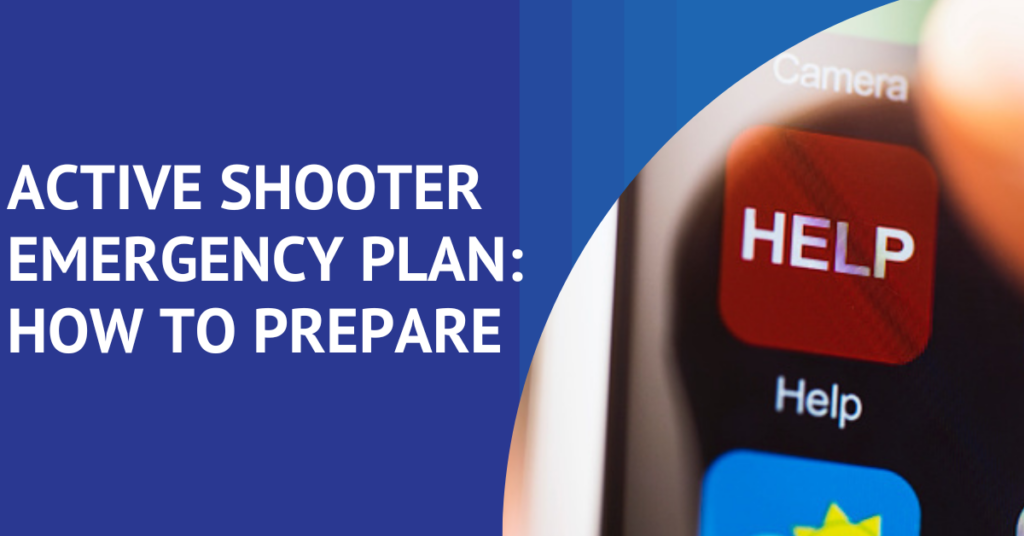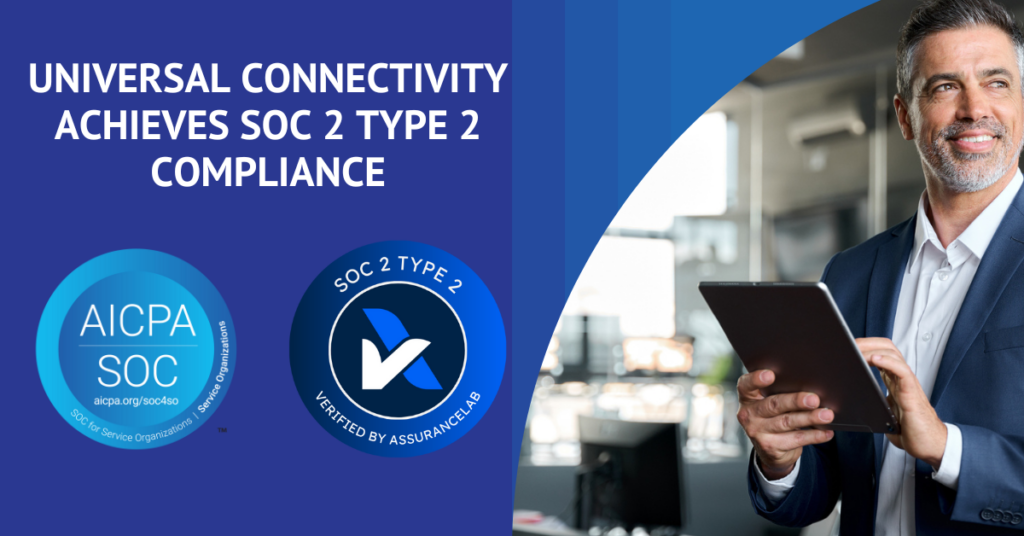Emergency Management System: Safety and Security for Everyone

In the fast-paced landscape of today’s organizations, imagine a scenario where safeguarding your team and ensuring seamless daily operations are not separate goals but a unified strategy. The true test of readiness during a crisis lies in how swiftly your response plan can be executed. Picture a situation where your workforce, students or patients stay safe, and your operations continue without disruption during emergencies, all made possible by your emergency management system. Prioritizing the well-being of your people, from the initial stages of a crisis to the resumption of normal activities, can transform chaos into a coordinated, effective response. This involves equipping your organization with tools that address a wide range of security and safety concerns including daily communication and operations.
Why should every organization engage in this conversation? Because it directly impacts safety, resilience, and operational continuity, ensuring that organizations are well-prepared. It instills confidence among employees, clients, stakeholders, and visitors. A clear understanding of your organization’s specific needs in a crisis is essential for the successful implementation of an emergency management system. Let’s explore the significance of such a system in any organization and examine best practices for maximizing its effectiveness.
Key Aspects
Prioritizing safety is paramount, and an effective emergency management system is at the core of achieving this goal. They’re not just tools; they’re your organization’s safeguards for people, operations, and reputation. From preparing for the unexpected to ensuring compliance and preserving your reputation, these aspects highlight the pivotal role these systems play in ensuring safety, resilience, compliance, and operational continuity. So, what are the critical functions and benefits?
- Enhanced Preparedness for Unpredictable Situations: Emergencies, in their very nature, are unpredictable. An effective emergency management system prepares organizations for a range of unforeseen events, from natural disasters to human-caused incidents. Having a plan in place allows organizations to mitigate risks and reduce the potential impact of such events.
- Protection of People: The safety and well-being of employees, clients, and visitors are paramount for any organization. An effective emergency management system ensures clear procedures and protocols to safeguard people in various emergency scenarios. This focus on safety shows an organization’s commitment to its most valuable asset – its people.
- Business Continuity and Resilience: In times of crisis, maintaining operations is crucial. An effective emergency management system minimizes downtime and financial losses. It ensures that the organization can recover and continue its operations with minimal disruption, thereby enhancing overall resilience.
- Regulatory Compliance: Many industries are subject to legal and regulatory requirements regarding emergency preparedness. An effective emergency management system aids in complying with these regulations, avoiding potential legal repercussions, and ensuring the organization meets industry standards.
- Effective Communication: In a crisis, communication is key. An effective emergency management system facilitates clear, prompt, and effective communication within the organization and with external entities such as emergency services, which is vital for a coordinated response.
- Reputation Management: An organization’s crisis management can significantly affect its reputation. Effective emergency management through a well-structured system can enhance public trust and confidence in the organization.
What Leaders Should Consider
Recognizing its significance is just the beginning. Leaders must also conscientiously assess several factors to ensure its real-world effectiveness. Here are considerations that will guide leaders in making informed decisions when implementing and supporting an emergency management system:
- Training and Drills: It’s crucial to perform regular training and emergency drills. Leaders should invest in training their staff to ensure they are familiar with emergency procedures and can respond effectively during a crisis.
- Resource Allocation: Leaders need to allocate resources, including budget and personnel, for the implementation and maintenance of the emergency management system. This includes investing in the technology itself, as well as ongoing training and updates.
- Testing and Maintenance: Regular testing and maintenance of the emergency management system are vital. Leaders should establish a schedule for testing all components of the system, from communication channels to equipment monitoring, to ensure they are functioning correctly.
- Integration: Consider how the emergency management system integrates with other existing systems within the organization, such as security systems, surveillance cameras, and access control. Seamless integration can enhance the overall effectiveness of the emergency response.
- Legal and Compliance: Ensure that the emergency management system complies with all relevant legal and regulatory requirements in your industry or region. This includes privacy regulations, data protection, and industry-specific standards.
- Scalability: Leaders should plan for scalability. As organizations grow or change, the emergency management system should be able to adapt to new requirements and challenges.
- Cybersecurity: In today’s digital age, cybersecurity is a significant concern. Ensure that the emergency management system is protected against cyber threats, as any compromise could hinder emergency response efforts.
Best Practices for Emergency Management
In the face of unexpected emergencies, a robust emergency management system becomes your first line of defense. Best practices, tried and tested strategies and methods, are invaluable in this field where the stakes are high, and errors can be costly. By adhering to best practices, organizations can ensure that they are well-prepared to handle emergencies efficiently and effectively, minimizing risks and maximizing safety.
- Daily Communication and Operations: Efficient communication is a cornerstone of successful daily operations in any organization. A versatile system that aligns with your specific requirements – whether addressing IT challenges, monitoring equipment, managing announcements, visitors, bell systems, overhead paging, family reunification, or establishing a tip line to maintain connectivity with remote workers, regular communication is vital. This adaptability is important for the smooth functioning of schools, businesses, healthcare facilities, and manufacturing plants.
- Risk Assessment: Initiating an emergency management system begins with a comprehensive risk assessment. Identify potential threats such as severe weather conditions, active shooters, medical emergency or any other risks that could jeopardize the safety of your employees and visitors. Recognizing these risks enables the customization of your emergency response plans to safeguard your unique environment effectively.
- Developing Emergency Plans: Create detailed emergency strategies for various potential scenarios. Incorporate evacuation methods, assembly areas, and clearly defined roles for key staff. Converting these plans into digital formats through an emergency management system ensures accessibility and consistency in response, reducing confusion and optimizing outcomes. Regularly updating these plans is crucial for maintaining their effectiveness, including safety drills monthly.
- Communication Protocols: Effective communication is the backbone of any successful emergency response. Establish clear protocols for message dissemination, including the communication channels, hierarchy, and the process for initiating alerts. Tailoring the communication method to the situation is crucial, whether it’s widespread alerts or discreet messages to a select response team. This approach significantly enhances the safety and readiness of your organization to face any crisis.
- Collaboration with External Agencies: In certain emergencies, external assistance might be necessary. Having accurate 911 call routing and dispatchable location management systems in place to quickly identify emergency calls made from your premises and to efficiently coordinate with first responders can significantly enhance response effectiveness. Also, consider involving the local community, such as law enforcement, fire departments, and emergency medical services, in your emergency preparedness efforts. Collaborative planning can improve response times and coordination during emergencies.
- Learning and Improvement: Post-emergency analyses are an integral part of any emergency management system. They provide valuable insights into the effectiveness of current practices and highlight areas for improvement, ensuring that the organization continually evolves and strengthens its emergency preparedness.
Emergency Management System: Asking the Right Questions
Investing in the right emergency management system to ensure a fast and efficient way to share information for both daily operations and emergencies is critical. The emergency management solution you select must meet your organization’s needs. To begin, identify the specific challenges and scenarios your organization faces. Find out what’s currently working, and what’s not working. This insight will give you a better understanding and help determine the necessary features and the most suitable solution. Look for a system that offers a wide range of message delivery options and the flexibility to set up easy-to-activate notification triggers.
Once your team has established a comprehensive risk assessment identifying the potential threats to the organization (such as severe weather conditions, medical emergency, intruder, or any other risks), it is important to assess the system. Ask your trusted strategic partner the following questions:
- Does the system reach on-site and mobile devices?
- Are there critical event management features included in the system?
- Does it offer tools (like roster, roll call, patient tracking) to help account for students/patients to know where they are and if they are safe?
- After an incident ends, does it carry out an efficient reunification process to transfer students/patients from teachers/nurses to their legal guardians?
- Does it broadcast to desk phones, or does it call them?
- Can you demonstrate the live-audio broadcast functionality of the system?
- Can the system be configured for panic trigger buttons?
- Does it work with other systems and devices (i.e., my existing paging system)?
- How does it handle weather alerts?
- How does it handle equipment monitoring?
- Have other clients utilized the system in a similar manner?
- What kind of training and support do you offer?
- What is the timeline for implementation?
- What is the expense associated with this solution?
Conclusion:
Understanding the significance and implementing best practices in emergency management is imperative for safeguarding your organization and, most importantly, your people. At Universal Connectivity, we offer advanced solutions powered by InformaCast. Designed to bolster your emergency preparedness as well as ensure seamless daily operations. Contact us today to start the conversation and discover more about the immense value of having accessible resources that empower your team to adeptly handle emergency situations and maintain routine communication, ensuring safety across various devices, including legacy systems. Partner with Universal Connectivity—your local Connecticut provider committed to ensuring every business deserves to be better connected.
Choosing a Business Phone Provider
How do you choose the right business communication partner to help your business thrive? Grab our free, one page checklist. Compiled based on years of experience, this download can help you jump start your search and selection process and:










